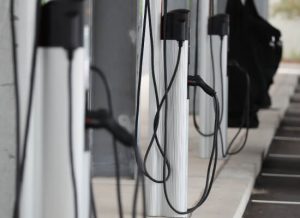Over the last century, densification within cities has impacted the quality of our urban spaces. The surge in population density caused need for large roadways and more residences which ultimately reduced walkable urban spaces within cities (Tanan & Darmoyono, 2017). In recent years it has become apparent that walkable cities provide extensive environmental, health, and social benefits, therefore causing a re-emergence of the walkable city (Marquet & Miralles-Guasch, 2015). The walkable city is multi-faceted, it considers not only the practicality of implementation among urban structure of a city and it’s systems, but it also considers the social concerns of it’s users including comfort, safety, security and aesthetics (Tanan & Darmoyono, 2017). In the video below Jeff Speck speaks about his “general theory of walkability” and the four principles that support a walkable city.
Transitioning from a typical urban street plan to a walkable city can be challenging for cities with poor transportation and infrastructure systems. Social acceptance, political acceptance, and policy integration are additional factors that many cities must consider when redeveloping their urban spaces. When the city of Bogor in Indonesia decided to adapt their vehicle centered city into a space that encouraged walking, they worked to integrate the public’s opinions and ideas by hosting a design competition. The intention of the design competition was to encourage the public to share their ideas of how the existing spaces could be improved by integrating green transportation, green buildings and green open spaces. The central purpose of the designs was to improve the quality of the open space and strengthen the historical and local identity of the City. The design competition proved to be an extremely useful tool to increase public support of the proposed green and walkable city. The competition functioned as both a form of stakeholder engagement and boosted the support of the public and allowed the innovative ideas of the community to be integrated with the policy and regulation of pedestrian transportation systems. The inputs were used by decision makers to enhance the city’s planning guidelines to support a green city infrastructure (Tanan & Darmoyono, 2017).
Sources:
Marquet, O., & Miralles-Guasch, C. (2015). The walkable city and the importance of the proximity environments for Barcelona’s everyday mobility. Cities, 42, 258-266. doi:10.1016/j.cities.2014.10.012
Tanan, N., & Darmoyono, L. (2017). Achieving walkable city in indonesia: Policy and responsive design through public participation. AIP Conference Proceedings, 1903(1) doi:10.1063/1.5011598




